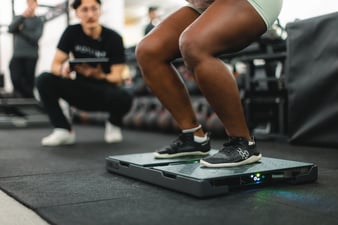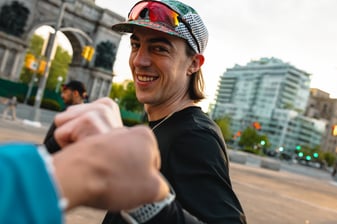Rehab Gym or Secret Club? What Happens At Physical Therapy
Tyler Nightingale, DPT
Back to Blog
June 24, 2024
If you’ve never been to a Physical Therapy clinic before, you might wonder what goes on inside those walls. From the outside, some appear to be shrines to the colorful elastic band, and others don’t look much different from your neighborhood gym. Inside, you’re more than likely to find faux-leather adorned treatment tables with athleisure donning personnel hovering around them while they move body parts forward and backward.

For the uninitiated, in most settings Physical Therapist’s (PT’s) exist to help people go from being in-pain and unable to do their most beloved activities to uninhibited pain-free movement. To get you there, a PT must first perform an assessment with the purpose of understanding the what and why of your pain. What is the problem, and why is it happening now?
This can take many forms depending on how familiar you and your PT are for each other, as well as how complex your injury and injury history are, but in its base form, an assessment follows a predictable format:
- Interview

- Movement exam
- Testing
- Treatment & plan of action
Interview - Sit down, relax, and talk about your body troubles. The first section of an assessment puts the ‘therapist’ in PT. To be effective, it’s important your PT understand your current injury, how it behaves, when it’s better or worse and how it all began. Equally important is understanding how the confluence of your lifestyle, diet, sleep behaviors and past injury history are playing a roll in your current pain experience.
Movement exam - It’s time to get up and move. In this part of the assessment, your PT will take information gathered from the interview to start to analyze your movement capabilities related to the problem you’re having. This is the start of teasing out the ‘what’ and ‘why’. Expect to find some isolated movements you aren’t very good at. This is positive news! If your PT can link it back to your pain, it’s the first step on the road to recovery.

Testing - Here, your PT is going to collect some objective information about your strength, range of motion, muscular endurance or whatever else is important to your problem. The best clinics (cough MOTIVNY) will have some fancy tech they can leverage for better objective data and the best results.
Treatment & plan of action - This is what you came for… a plan to get you back to doing what you love. This is the ‘so what’ of the assessment. All the information your PT gathered is packaged into a solution sandwich. Explaining the ‘what’ and ‘why’, then showing you a progressive way to move and load the problem area over the next couple of months will be explained. A good PT will link this plan to your goals and make it clear, step by step, how that plan will get you to where you want to be.

Without going through a comprehensive assessment, you’re more likely than not to be guessing and throwing things at the wall to see what sticks. A lot of the time, as the saying goes, ‘where it hurts, it ain’t’. Pain has a way of manifesting in strange places. It could appear several joints away from where the problem is - all the more reason to find someone who can really help you find the source of the issue. If you don’t find the ‘why’ behind it, you’re also likely to see it come back after a period of rest.
As someone who has both been injured and been a PT for a decade, do your future self a favor and get help when you’re hurt. Even if you think you know the problem, a second perspective from someone who doesn’t have to live inside your body is going to be a necessary step to moving and living your best.
.jpeg)
Tyler Nightingale, DPT
Tyler is an experienced Physical Therapist with a focus on the running and triathlon communities, specializing in lower limb injuries, running analysis & optimization and injury screening & prevention. Having run competitively in college before continuing with triathlon, Tyler understands the perspective of the driven athlete balancing career and competition. Whether working with elites or amateurs, the approach is the same: identify the why of the injury and fix it. Manual therapy, movement (re)training, strength work and learning more about your body are integral parts of this treatment style. Never settling for the generic, Tyler is obsessed with the small details that can unlock your rehab or training program.
tyler@motivny.com